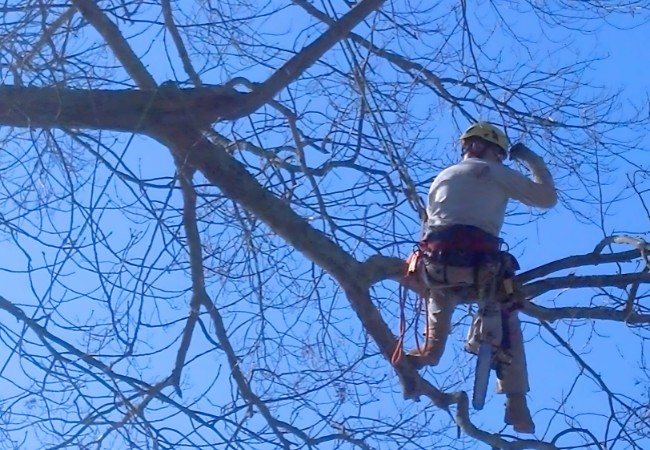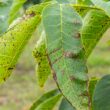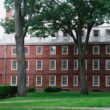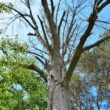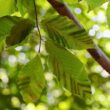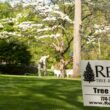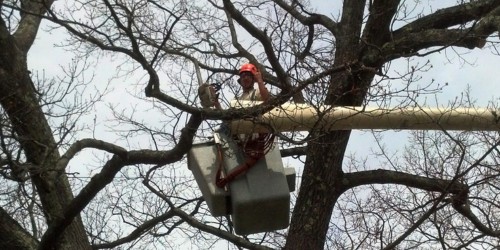When looking for ways to save money on tree care, you may think of trying to handle pruning yourself. Many homeowners attempt to trim their own trees but end up paying the price when they are injured or their trees end up damaged. Learn the most common tree pruning mistakes, how to avoid them, and when to hire professionals in Greater South Easton.
Key Takeaways:
- Excessive pruning (over 25 percent of a tree’s canopy) stresses trees and causes them to produce weak sucker growth, so it’s best to keep pruning light.
- Discredited practices, like tree topping and lion tailing, harm trees by removing necessary foliage and creating structural weaknesses that can lead to failure during storms.
- Avoid trimming anything other than deadwood in the fall to prevent your tree from putting out weak growth that won’t survive the winter.
- Sharp, well-maintained tools, like hand pruners, loppers, pruning saws, or chainsaws, are essential for making clean cuts that heal properly.
- Homeowners should leave large tree pruning to professionals with the proper equipment and training.
7 Pruning Mistakes to Avoid in Greater South Easton
Trimming trees is a vital service we recommend homeowners do or have a professional handle. However, the service isn’t as simple as cutting a few branches. It requires a careful eye for detail and a knowledge of tree care to avoid harming the plant.
Avoid these seven mistakes so you don’t harm your trees when you prune them yourself.
1. Pruning Too Much at One Time
Pruning should be something to keep light whenever you do it. While it is essential to remove branches, the branches you remove are the same ones the tree relies on to perform photosynthesis in order to grow. Over-pruning will leave a tree without enough leaves to thrive.
We recommend removing no more than 25 percent of the canopy at a time. It is even better to keep pruning far below that, to under 20 percent, to avoid causing too much stress.
Over-pruning can lead a tree to respond to the stress by putting out new growth that we call suckers. These weak branches will look ugly, require more work to remove, and waste a tree’s energy.
2. Performing Discredited Practices
Despite efforts to educate people on the dangers of poor tree care, some individuals and companies still employ techniques harmful to trees.
The most notorious of these discredited practices is tree topping. Tree topping involves picking an arbitrary point and cutting everything above it. The goal of topping is supposed to be to control a tree’s size, but this process does not work.
Tree topping causes significant stress for your trees as they lose a large number of branches and leaves. In response, it will put out rapid growth to try and recover. These new sprouts are unpleasant to the eyes and will end up with your tree trying to grow back to its original size. Topping will likely end with the tree’s death and necessitate removal.
“Lion tailing is another practice to avoid for your trees, but it is one we still see throughout Greater South Easton. You can tell when someone has lion-tailed their tree by looking at the foliage. The process leads to leaves growing entirely at the end of the branches rather than throughout the canopy. This gives the branches a similar appearance to lion tails, hence the name. And this is really bad for trees.” – Jay Allen, ISA Certified Arborist at Hill Treekeepers
As with topping, lion tailing removes the leaves your tree needs for photosynthesis and encourages new branch growth. Additionally, lion tailing makes the tree more unbalanced and puts it at risk of failing during a storm.
PRO TIP: While improper pruning may make your tree more likely to fail in a storm, doing it correctly will have the opposite effect. Learn more about pruning to protect your tree from nor’easters with our previous article.
3. Pruning at the Wrong Time
Pruning at the wrong time can harm your tree, just like doing the job incorrectly.
In our area, winter is the best time for most pruning because trees are dormant and it causes the least amount of stress. However, flowering ornamentals should be pruned after they bloom to avoid removing buds.
Be careful when pruning in summer and fall. In summer, keep trimming light, as this is when insects and diseases are most active. Cuts can create openings for pests, so only remove what’s necessary.
In the fall, avoid major pruning. It’s okay to remove dead or broken branches before winter to prevent hazards, but save most trimming for after the season changes. Pruning in the fall can encourage new growth that may be damaged by winter cold, wasting the tree’s energy and stressing it out.
4. Using the Wrong Tools for the Job
Trimming tools come in many shapes and sizes. Common tools include:
- Hand pruners for smaller branches
- Loppers for branches up to 1 ½ inches in diameter
- Pruning saws with curved blades for larger branches
- Chainsaws for large or hazardous branches
Depending on the size of the tree, you’ll need the right tool for the job. Using a chainsaw to prune an ornamental can damage it and cause improper cuts. If you don’t have access to various tools, consider having a professional handle the job instead.
In addition to having the right size, ensure the tools are in good working order. Pruning tools must be razor sharp to make clean cuts that allow a tree to seal the wound quickly. Using dull or rusty tools harms your tree, so always inspect your equipment before you make the first cut.
5. Performing the Wrong Types of Cuts
Cutting in the wrong spot on your tree can impact its growth or leave it prone to insect attacks. Some common examples of improper pruning cuts include:
- Flush Cuts: This cut is too close to the tree and removes the branch collar. It won’t be able to seal these wounds properly, and they allow for attacks from insects and diseases.
- Stub Cuts: A stub cut leaves too much of the branch remaining rather than cutting to the branch collar. The stub will die, and it will also open a tree up to pest attacks.
- Mid-Branch Cuts: If you don’t want to remove an entire branch, you must cut at a branch junction. Cutting in the middle of the branch leaves a stub that will die.
- Tearing: Trying to tear or snap off a branch instead of cutting it can cause a wound that will be difficult for your tree to recover from.
6. Attempting to Trim Large Trees Yourself
While most homeowners may be physically capable of trimming a shrub or small ornamental, the same isn’t true for shade trees. Large species can reach heights of 60 to 70 feet. Trying to prune them yourself can put you at risk.
Tree work is dangerous, even for professionals. However, a trimming service has access to equipment and tools that make the job safer. One of the most important is a bucket truck that allows a pruner access to the higher portions of the canopy without climbing.
Even when pruning medium-sized trees, a company might employ their bucket truck or orchard ladders to assist. If you can’t access the branches from the ground, play it safe and let a tree service handle it.
7. Trimming Public Trees Without Permission
Trees between the sidewalk and the road are public property, and you can’t prune them without permission from your local government. Attempting to trim these yourself could lead to a fine.
Some municipalities will issue permits that allow you to trim street trees, while others will have a dedicated team to inspect the trees and determine if they need pruning. Always follow all local laws and ordinances whenever you try to trim.
Frequently Asked Questions About Pruning
There’s always more to learn about tree pruning, and to help, we’ve answered some of the common questions about the service.
Do you need to apply a wound dressing to your trees after pruning?
No, applying a wound dressing will actually impede your tree’s ability to seal its wounds from pruning. Allow time for the tree to compartmentalize the wound naturally without applying paint or coverings.
How can I tell if my trees need trimming?
Some of the typical signs a tree may need trimming include:
- Multiple branches compete with each other or rub
- Crowded canopy
- Broken or dead branches
- Growth interfering with structures or utility lines
What safety equipment do I need for tree pruning?
At minimum, wear safety glasses, work gloves, sturdy footwear with non-slip soles, and a hard hat. For chainsaw work, add hearing protection, chainsaw chaps, and a face shield.
How can I tell which tree service to trust with my trees?
Whether you have just one tree or are in charge of a condo association, you must find the right company to take care of your trees correctly. Look for a company that avoids using discredited practices and employs a Certified Arborist.
Do I have to prune my trees?
Yes, pruning is a necessary service and a vital part of tree preservation. Failure to prune can lead to overgrowth or poor branch structure. It will also lead to your tree looking ugly.
Regal Tree Can Help with All Your Tree Pruning Needs
There are many dangers to attempting to trim trees yourself. If you aren’t confident in doing it yourself, it’s best to leave the job to professionals who won’t make many of the common mistakes.
The team at Regal Tree understands the needs of our local trees and how to care for them. We can offer expert guidance on the best pruning practices for your trees. Call us today at 774-719-2450 or request a quote online for trimming.


